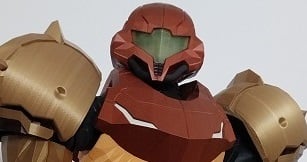Elon Musk says ‘we dug our own grave’ with the Cybertruck as he warns Tesla faces enormous production challenges::Tesla CEO Elon Musk said Wednesday that the Cybertruck’s unique design means the company faces immense challenges in scaling production.
“We”
When things go right, it’s “I”. When things go wrong, it’s “We”. These are Musk’s situationally preferred pronouns.
No different than Trump
I mean, with Trump it’s more like ‘They’.
Yeah, Trump won’t accept any blame for anything, even when it’s obvious to anyone with a functioning nervous system.
I mean it’s capitalism in general usually. When the company is profiting, it’s due to the CEO. When the company is failing, it’s the fault of the company as a whole
When it fails it’s because of the economy, please bail us out.
Same narcissistic behavior. These are the narc pronouns
I’d dare to say no different than any of those guys in charge
Pretty standard for a rich boi
Exactly. Who has the one promoting it? It was you, Elon.
He’s very likely the one who pushed the engineers to try to make it work in the first place. They probably tried to warn him of the challenges it was going to face at every step, and he just used the power of arrogance, bullying, & positive-thinking to ignore it and just go full steam ahead with it. He would’ve just fired anybody that directly challenged him on it and told him what an idiot he is.
Not only they warned him. Reports are Tesla design department out of their own initiative and knowing how bad the proposed cyber truck was developed and alternate “sane” Tesla electric pickup truck proposal. When they tried to suggest it to Elon he reportedly didn’t want to here none about it and got mad.
He told the design boss just to make the existing design work. As we can see that didn’t end up going well.
Credit for innovation: capitalism. Credit for failures: socialism.
Must be the royal we.
Musk and the sycophants he surrounds himself with
Wasn’t he the one who made a bunch of ridiculous demands? This car seems like it was designed by Homer Simpson.
In my head it was Elon who sketched the truck and told everyone “make that exactly how I drew it”
No way this thing is soft and yielding like a nerf ball
At least it’ll be more powerful than a gorilla.
And when it catches on fire, you won’t be able to break the glass to get out!
Unless you have a steel ball to throw at it.
Yah there’s even an episode where Homer designed a car. Didn’t go well.
That’s weird, I could have sworn he said that they nearly had all the issues sorted out and that it was coming next month… Trying to remember when he said that… 2021?
Bruh that delay was because of the PLANDEMIC!!111!!
/s
Every time the stock dipped, often after intentionally driving the stock down before pumping it back up.
“When you’ve got a product with a lot of new technology or any brand new vehicle program, especially one that is as different and advanced as the Cybertruck, you will have problems proportionate to how many new things you’re trying to solve at scale,” he added.
does it have new technology? i thought it was just like, shockingly ugly?
It’s got a lot of new things to them
800v power train
Newer 4680 cells
~85% custom chip controllers (up from 60s on Y)
48v power electronics instead of 12v, which is fairly new to everyone and the supply chain isn’t as robust as the 12v one, but long term it’s good for industry. (Edit I’ve heard talk of how they connect everything is going to be very different too, but nothing I’ve seen confirmed)
Folding the stainless steel at scale
9000T press, biggest one made
The wheels that can turn on front and back
New assembly method (excluding stainless steel part)
I’m sure there’s more they didn’t tell us.
It went from being a weird vehicle (love or hate it) to a new technology platform.
4 wheel steering isn’t really new. (but your point is still taken)
I did say “to them”
800v isn’t new either, others use it
Edit: stainless steel aside, I have a suspicion that the 48v stuff will cause the most problems. That seems like a lot of suppliers where 1 problem halts the line.
In telecommunications at least, -48V is the standard. It will still be a massive issue but not impossible for suppliers to adapt (with delays). The biggest problem I see is the high cost associated with such low demand, unless more manufacturers start switching over.
48v is in automotive as well. Most of the cable manufacturers are using PoE Ethernet. Belden has product lines devoted to this. It vastly simplifies wiring all the systems of a car together.
AFAIK Tesla is the first mass auto manufacturer going 100% 48v.
Others have a hybrid approach
I can see that 48v head and tail lights would cause a problem. It makes sense to start that on a vehicle that won’t see high volumes, since there wouldn’t be many needed.
The biggest problem I see is the high cost associated with such low demand, unless more manufacturers start switching over.
That will be a big issue. I think the entire industry will switch, but it’s not going to be immediate.
Once the CT is fully ramped, they’ll probably start to see some of those costs come down a little, but 250k a year pales in comparison to the whole industry using something.
Teslas Gen 3 platform will add to that scale and help too, but it’ll still be smaller than the industry.
Pretty much the entire list seems like features that have existed for industrial applications.
Which, sure, is challenging to transition to a new company and scale up to consumer levels of production and down to consumer levels of cost. But I agree everything about this truck seems iterative.
What would you ever consider new in any vehicle if you look at it like that?
Solid state batteries? Not new, it’s just changing the anode but a battery is a battery so it’s just an iteration.
… Not much.
I’m not really looking to the automotive industry for completely new innovation like that. If I’m going to spend tens of thousands of dollars for a car, I’m probably going to keep it for at least a decade and I value it being reliable and easy to repair. Mature technologies have a lot of advantages over new innovations there.
I’m not the one claiming that these features are new or innovate, and I’m not the one claiming that being on the cutting-edge of technology is a good thing. Musk is.
An example of a thing which has been tried so many times, but which ultimately only increases complexity, expense, and rate of failure for very little gain.
“Ah yes, let us take one of the most finicky vehicular systems outside of the engine itself and make it literally twice as complex!”
And in return you get… slightly reduced turning radius.
Ya didn’t say I loved it lol. I miss my 2004 civic with crank windows I had that car for 14 years with 0 work done minus oil and brakes.
Ah that wasn’t my interpretation, I was just sort of “yes, and-ing” your comment
For a company with already terrible QC that’s a lot more things to go wrong for buyers unfortunately
I don’t think a lot of those things are where Tesla really struggles with quality that’ll impact the customer. Just production delays and cost.
I’d be pretty surprised if the power train is a problem as that’s their specialty.
Same with the electronics, those don’t usually have problems except the electronic door handles that the Cybertruck won’t have.
I’ll be pretty surprised if the steel doesn’t cause QC problems, and I’m half expecting that massive windshield wiper to be a problem somehow.
Maybe the air suspension will be problematic, and probably the powered tonneau cover.
How is 48v better than 24v, for example? I don’t really know much about car electronics
Higher voltage allows for fewer amps. Higher amps creates more heat and requires thicker cables which cost more and add weight. So it’s substantially less copper since the wires don’t need to be as thick.
I can’t give exact numbers, but going from a 12/24v to 48v wiring harness will reduce the harness weight. I don’t know if that’s on a linear scale or not in terms of reduction.
A thinner wiring harness would also be easier to manage and place, e.g more bendable, less space required to place it.
It also gives you more leeway if you do want to push more amps to something without having to get into the really really big unwieldy wires that are very difficult to shape.
24v would work, but I imagine the thought is, if we need to create a whole new supply chain for automotive parts at a different voltage, why go to 24v when we can go to 48v and get even more benefits? The process is already happening, others have some hybrid 48v usage.
Someone else could comment on this, but without knowing more, I would speculate that higher voltages would even allow some sort of shrinking of the components themselves since internally they wouldn’t need to support as high of amps either, but that’s just my speculation.
Edit: Just some hypothetical numbers. If a wiring harness is 150lbs and lets say 48v gets it to 50lbs, that’s a $375 cost savings in copper alone. That’s also a ton less copper used/mined across the whole auto industry once transitioned. At 67 million cars a year, that would be 6,700,000,000 lbs of copper saved per year.
ok i work in a kind of tangential industry and can kind of answer this probably
in general the higher the voltage the smaller the current, which you’re generally happy about because your 1) electrical losses and 2) cable/wire diameter are both proportional to current
the tradeoffs being 1) it gets harder and more important to isolate the circuit (e.g. your wire insulation that prevents the 12V bus from shorting out to the vehicle chassis now needs to be thicker) and 2) all the stuff people make for cars (i dunno, windshield wiper motors, radiator fans, whatever) is currently for 12V
in general this move probably makes sense, provided they’re able to figure out their supply chains, and if tesla can position themselves as being like the first company to figure out a bunch of these 48V components at scale that’s probably going to be really good for them. they did a kind of similar thing with the charging infrastructure if i understand currently, like now the tesla charging cable is the de facto north american standard
insulation
I’m no expert, but even with ordinary 12V wiring, the insulation is generally rated for up to 600V, just because it’s not really practical to make it any thinner…
The charging cable isnt de-facto the standard. It is the standard now. All new vehicles from the big 3 and many foreign manufacturers will utilize NACS.
Pretty sure we’re still waiting on Stellantis?
Them and VW.
I was reading VW might be more complicated due to the emissions scandal and the requirements of rules for EA, but not a blocker, just more to work out.
For sure. Might have jumped the gun on stellantis, but they will fall in line with Ford and GM.
Regardless, NACS is here to stay and will be the standard moving forward. Tesla gets a fuck ton wrong, but their charging system and charging logistics is light years ahead of the competition.
So here is some information on where the 48v standard is coming from. https://www.microcontrollertips.com/what-is-the-ideal-ethernet-choice-for-automotive-applications-faq/
it’s new to Tesla but not automotive.
AFAIK Tesla is the first mass auto manufacturer to go fully 48v? Others are hybrid.
It took a lot of work to make windows that shatter so easily.
First you have to mass produce a lot of cannon balls, hire people and train them to throw the cannon ball perfectly so the broken window looks perfect.
How else are you going to get it on a shirt if it doesn’t look perfect?
Gee… telling the engineers to getting precision to below 10 microns would cause production challenges.
I’ve been doing PCB-board design recently. Here’s the manufactuering specs: https://www.digikey.com/en/resources/dkred

So that’s 0.13mm tolerances to my printed-circuit board. Or 130 microns.
Current leading theory is that Elon Musk is such an ignorant dumbass that he doesn’t know the difference between mils and microns, despite running a car company / manufacturing firm. Give that a thought. Even then, 10-mils tolerance is near this PCB design, an object that’s only a few inches in size. Cars are much larger and normally should be built to much wider tolerances than a fucking PCB board.
If he said <10 mils, I’d might have bought the explanation that Elon actually meant millimetres. Micron is a very specific metric-based unit which to Elon might have been trying to use like a buzzword.
The moral of the story is don’t say stupid engineering stuff if you don’t want engineers to laugh at you.
And 10 microns at what temperature? Because on something the size of a car, made of mixed materials, thermal expansion of less than a degree is going to blow that figure.
They couldn’t apply paint to a tolerance of 10microns.
Ten mils is .010" or .25mm if I’m not crazy.
It’s a very standard tolerance for aircraft parts.
Yeah and that wouldn’t be too bad either… still expensive but not completely unrealistic for ALL parts of a car.
Kinda unreasonable for the number of cast parts most cars use, but for machined surfaces it shouldn’t be too bad.
It’s almost like Elon Musk is a complete fucking moron and not an Engineer. The wanker has never actually designed a thing in his life. He just tells other people to design something, or buys an existing company, then struts around like he thinks he’s the smartest thing around.
He was fired for being incompetent. Only got rich because rich daddy and because he got lucky with stocks
I recently listened to a podcast about musk which was more on the anti side. The podcast had some parts about spacex and musks own work ethics, which told more of a story that he actually has some insights and knowledge and was a insane workoholic. Which shifted my perception of him. He isn’t dumb, he is a really good conman.
Lmao “if Lego and soda cans can do this, so can we.” At least he found materials similar to his existing vehicle build quality
Hey, don’t disrespect Lego like that
Serously folks have snapped steel rods using them.
“At this point I think I know more about manufacturing than anyone currently alive on Earth.”
Flashbacks to Steve Jobs and the NeXT Cube.
What an idiot
I have what are basically toy 3d printers capable of 1 micron precision…
Cool. Build 10 pieces and fit them together with sub 10 micron precision.
Ok, and once that’s done with the high level of repeatability and quality I’ve done it a thousand times, then what?
Scale that up to a 4 ton production-ready consumer vehicle without introducing defects, I imagine
The heaviest Tesla is around 2.5 tons…but that’s beside the point.
The scale doesn’t matter. In fact, taking a desktop process and industrializing it makes it more accurate and repeatable - especially in a large-item manufacturing setting.
The best argument against the 1 micron requirement is that it’s unnecessary from a practical standpoint. I completely agree with that, for sure.
Which printer is giving you 1 micron precision?
It depends on the model being printed.
1 micron is easy to achieve on the Z axis with almost any printer, using any 3d printing technology (FDM/SLP/SLA/etc).
In the X/Y axis, the vast majority of FDM printers are off the table for 1 micron - increasingly so as the Z height of the model increases, especially on bed-slingers like the Ender 3. The taller the model, the harder it is to maintain accuracy on X and Y.
In SLA/DLP printers, it’s all about the motor, controller, and whatever shields excess light/beam diameter.
To answer your question directly: I have no trouble getting highly reliable micron accuracy in a $99 Creality Halot. The key is to understand your model in relation to the pixel density of the screen. Some calibration prints tell you where the steps are, describing the relationship between input and output - which will most certainly be different from printer to printer at the consumer level. Once you have that data, some simple math tells you exactly how to design your object in a way that takes these natural constraints into consideration.
Yes - at any scale, even at the size of a car…or a battleship. When you accept the constraints of the hardware into the design of the object being produced, you can get micron repeatability out of just about anything.
Oh I see… You’ve confused microns with Thou (aka mils)… much like Elon has.
Nope.
So does that mean that you can get 1 micron accuracy as long as the part is sized to a multiple of the pixels width on the x and y? Is that just for aligned straight edges or can that be done for curves too?
The pixel alignment is a good place to start, but no 2 printers will produce an identical result at that level. That’s why it’s important to tune the model to the printer - not the other way around.
Can you get it on curves? Yes, certainly. For 3d printers, even the position you choose for the model within the build area makes a difference.
The question is really about executing the process of engineering in the correct order.
The most common mistake is to design the thing you want to build first. In reality, you start with what is essentially a sketch of what a functional end product looks like. Then, you buy/build tools/manufacturing equipment. Finally, you refine your sketch into a manufacturable product based on assessment of the most reliably repeatable results available from the actual machinery as it is installed.
deleted by creator
Seems like a reasonable next step!
Then take them to a different environment and measure them and then put a Lil water on them and measure them. Then get a mechanic to fix them and then shove it up your butt because any real engineer designing a car would tell you that kinda precision is just fucking stupid at production level for a car
I’ve already said a dozen times: no shit Sherlock, this is absolutely unnecessary for this application.
It’s also completely irrelevant to change up the environmental parameters when that is not a constraint set at the outset of this conversation.
I swear to God, it’s like there’s an entire subspecies of moron non-engineers who exist for the sole purpose of arguing where no argument exists.
A car doesn’t go through environmental changes? Because we are talking about engineering a car. You are talking about your 3d printed dildo of musks cock or something that you got into microns or some shit. It’s almost like there’s a entire subspecies of moron non-engineers who exist for the sole purpose of arguing about why musks cock is microns… you asked what to do next
Are you still arguing with a ghost? Nobody said a car doesn’t go through environmental changes… It just has nothing to do with this discussion.
Bullshit.
The thermal coefficient of expansion of say… Aluminum is 23.
That means that when a 1 meter piece of Aluminum rises from 20C to 21C, just one degree Celsius, it grows by 23 microns.
Your 3D printer is not a temperature controlled precision instrument. Your tolerances are no where close to 10 microns let alone 1 micron.
There are micron-level precise instruments in the engineering world. They all come with temperature characteristics because thermal expansion is a bitch. 3D printers that literally heat up hundred degrees and cools down regularly literally can’t be this precise, the heat alone wrecks your precision.
Bullshit.
You’re changing the premise of the question.
Pick a temperature - design your model to be whatever you need it to be at that target temperature - just like every other engineer with 26 years of experience, such as myself.
(by the way, my UV resin printer is quite temperature stable.)
Your resin printer does not have the resolution of 1/15th the size of a damn white blood cell. Your blood is 15 microns per cell or so. Red blood cells are smaller at around 7 microns.
You, and Elon, have confused your units quite significantly. I’ve given you the opportunity to see your error by reminding you the difference between thou, mils, mm, and microns. But apparently you haven’t gotten the hint yet.
My university created micrometer-sized balls, gears, and other such devices. They’re called MEMS and are really cool. They’re not made with 3d printers but instead lithography (same technology as computer chips, because they’re so small its easier to make through lithography). You’ve confused your units and its clear based off of how you’ve been talking. Take a step back, and double-check the difference from thou, mil, mm, and microns.
Sigh.
Please stop being confused about the capabilities of modern SLA/DLP processes.
What is the diameter of A PHOTON? And don’t forget to answer ignorantly, in a condescending i-know-more-than-my-betters tone. No, seriously - look it up. You clearly don’t know.
How many blood cells wide is light? By all means - tell me what the particulate size of photocuring resin might be? Could it be…2 microns maximum even for the largest ceramic-infused resin slurry - with sub-micron particulate sizes easily available even from Amazon? Yes - far, far smaller than blood cells. This is why you can’t let this shit get on your skin. It will literally traverse the blood-brain barrier. The fumes can get particles of this size into your bloodstream.
Well, what on earth can I do to get 1 micron accuracy from zero-width photons and 2-micron UV cured particles? Perhaps - design my model to be LITERALLY ANY SIZE that happens to be divisible by 2 on X, Y, and Z axes, then center it on the build plate?
Can you please get with the program, here? I’ve likely been doing this work longer than you’ve been alive. I’m not even supporting Elon’s demand, which is almost certainly unnecessary for this application.
What is the diameter of A PHOTON? And don’t forget to answer ignorantly, in a condescending i-know-more-than-my-betters tone. No, seriously - look it up. You clearly don’t know.
Thanks for giving me more absurd examples. Your UV light is a 400nm wavelength or so. Or roughly 1/3rd a micron. The fucking wavelength of your curing light.
Now get outta here with your attempts at pretending that your $200 UV printer has the level of accuracy of three fucking wavelengths of the light it’s using.
The size of the color red? That’s 700nm wavelength, or 0.7 microns. Your resolution that you’re printing here is no where close to the size of red-light photons.
zero-width photons
Oh, so you don’t know how light works either. Good grief man… light has a size and you’re running up against the size limitation of the light itself. Especially because I know for a fact that these UV Printers are NOT using lasers, so you have no way to actually line up all the photons to hit the same location since their wavelengths are all unaligned.
In any case, car parts are not made at scales comparable to the wavelength of infrared light (ie: the “size” of a infrared-light photon).
Shocking narcissism, yet again.
You clearly have no intent to learn from your mistakes and pollute your entire argument with ad hominem and every other logical fallacy in the book - all wrapped up with a bow of dismissal of the original premise.
Oh, and by the way, light is both a particle and a wave. “light has a size” - indeed, the wave of light we aren’t talking about has a size - called wavelength. Don’t be afraid to use the most accurate terminology for your irrelevant responses! The wavelength has zero influence on the dimensions of the final product, as any wavelength more than a couple nm out of spec won’t cure the resin at all, and there will be no object to measure. I think you know that and are just trying to win an argument by talking over the heads of the average readers on here - which doesn’t help your case.
It’s extremely likely you legitimately have a personality disorder, and are capable of much more if you clean up your act.
The problem isn’t that it can’t be done. The problem is that it is unnecessary and very expensive.
This is definitely true in terms of industrial production. (super cheap for “makers” - taking the hardware constraints into consideration with the design, of course).
Can you share a link? I’d love to buy me some of these.
https://www.creality3dofficial.com/products/ld-002r-lcd-resin-3d-printer
Don’t forget - it’s not as simple as just buying the printer. You need the right resin, several iterations of test models, and the right modifications of the model to work within the constraints of the printer and material.
With the right tuning, you will be able to create parts which measure within 1 micron tolerance reliably. (don’t forget to use an indicator and good reference blocks - you aren’t going to measure microns with a caliper or micrometer)
You’d think the guy claiming to “know more about manufacturing than anyone else on Earth” would have anticipated such issues at the start of the design process.
Good. Jump in.
*invents stupid and logicitally impossible truck.
*Production challenges
Weird, Ford and Rivian both seem to be able to make an EV pickup truck.
And GM, the epitome of “slow and bloated legacy dinosaur”, who in the time since Tesla announced the cYbErTrUcK, managed to design AND RELEASE a truck before Tesla even had prototypes. At this rate, I think they’ll technically have 3 different trucks out before a single cYbErTrUcK is sold.
The automotive giants always could have outpaced Tesla, they just didn’t want to because until it was viable with enough consumer interest (and competition), it was cheaper to only produce fossil fuel vehicles (and lobby against electric vehicles at every turn)
It didn’t go through, guise ah ah ah ah
What a massive dunce
Here is an alternative Piped link(s):
Piped is a privacy-respecting open-source alternative frontend to YouTube.
I’m open-source; check me out at GitHub.
Of all the cringiest things to ever happen on the internet this is one video I just can’t ever rewatch.
Just the most cringe in one video.
I remember watching this live, happy that my wife chose not to join me once they rolled it out, and ESPECIALLY after the window demo. Ugh. Cringiest night of my life.
 . Cybertruck.
. Cybertruck.The real story is that a million people have reserved this thing.
Given that I had dumbass coworkers at work who gleefully dropped $500 to “reserve” one of each trim, despite not even being able to even afford the cheapest trim (which will never even come close to existing with the listed price+specs), I’m not betting that it’s probably 1/4 of that, and about 1/4 of those will ever actually translate to purchases.
When I was a kid, I asked my dad why the cars on the road didn’t look like any of the prototype cars I saw in autoshows or car books.
Now Elon has given me the answer. Those cars are hard to make at scale. One is doable, but thousands is impossible.
deleted by creator
They? Elon Musk owns Tesla. He gets to decide what they spend the money on.
As I understand it he is still answerable to board of directors. Isn’t he?
I seriously doubt any of them have any control over him. He controls their income with a single meme tweet.
deleted by creator
Who could have known that traditional manufacturers who have been building cars for decades have reasons to do it the way they did?
Surely not the man who reinvented the subway (but shitty) reinvented content moderation (but shitty) and reinvented the car (but shitty).
How come “normal” Teslas with traditional coachwork are selling, well not great, but good and every time Musk thinks he’s the genius who’ll singlehandedly completely reinvent a very competitive product he just creates a worse version?
I actually thought this was an elaborate joke. The “Cybertruck” looks like a piece of shit, and apparently is a piece of shit.















